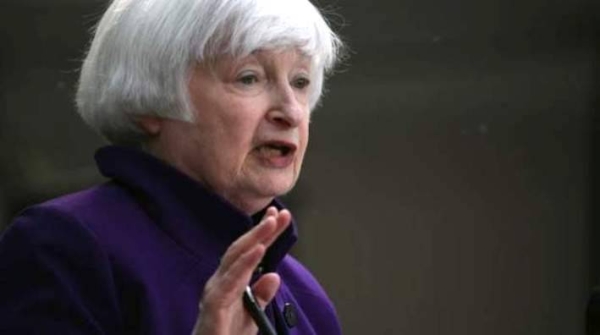
Washington’s policy of applying “maximum pressure” on Iran with wide-ranging sanctions has shredded the country’s oil revenues, sent its economy into recession and devalued its national currency.
Yet Iran remains defiant in the face of US efforts to compel it to accept tougher restrictions on its nuclear program and scale back support for proxy wars across the Middle East.
Iranian officials, business people and analysts say the country is staying on its feet by stepping up exports of non-oil goods and increasing tax revenues, but most importantly resorting to bartering, smuggling and back-room deals.
To circumvent US banking and financial sanctions, Iran’s rulers have built up a network of traders, companies, exchange offices, and money collectors in different countries, they say.
“America cannot isolate Iran,” said one senior Iranian official, who like other officials asked not to be named.
Ali Vaez, Iran Project Director at the International Crisis Group, said although the Iranian economy was in dire straits, it was far from being overwhelmed.
“Iran is quite experienced in living under economic duress ... In the past few years, its non-oil exports have grown significantly and so has their trade with neighboring countries like Iraq and Afghanistan,” Vaez said, according to Reuters. “Iran can also smuggle oil and generate some revenue.”Tough sanctions
Western companies raced back to Iran’s market and its oil income surged a year after a 2015 nuclear pact agreed with six major powers ended the sanctions regime imposed in 2012 over its disputed nuclear program.
New sanctions brought in after President Donald Trump withdrew from that agreement last May are the most painful ever imposed by Washington, targeting nearly all sectors of Iran’s economy including how it finances its international trade.
The OPEC member’s crude exports have been slashed by more than 80 percent since last year, against 2012 when exports plummeted to less than 1.3 million barrels per day (bpd) from about 2.5 million bpd.
Although food and medicine are exempt, lack of access to the global financial system has given rise to a humanitarian crisis with shortages of specialized medicine.
The International Monetary Fund has forecast that Iran’s economy will contract in 2019 by 3.6 percent because of dwindling oil revenues. The World Bank anticipates inflation jumping to 31.2 percent in 2019-20 from 23.8 percent in 2018-19 and 9.6 percent the year before that. Some economists believe inflation has actually topped 40 percent.
Iranian officials repeatedly contend that the country can weather the storm, but the reality on the ground is harsh.
The sharp devaluation of Iran’s national currency and difficulty paying for urgent import needs have led to spikes in the prices of bread, rice and other staples.
“It is easy for officials to talk about resisting America’s pressure. They don’t have to be worried about the rent or increasing prices of goods,” said Ali Kamali, a 63-year-old retired teacher in Tehran. “Prices are going up every day.”
An end to sanctions is not in sight anytime soon, with Trump saying on Tuesday that pressure will intensify on Iran. Iranian President Hassan Rouhani will give a speech at a UN General Assembly on Wednesday that will likely determine whether Tehran will re-engage with the United States.
Tensions have been further raised by September 14 attacks on Saudi Arabia’s oil sites that Washington, Riyadh and the European Union blame on Iran. Tehran denies involvement in the attacks, which were claimed by Iran-aligned Houthi militias in Yemen.
“Iran doesn’t have many other sources of income, beyond oil, so their economy is in a tailspin ... They do have considerable budgetary reserves ... to get them past the next few months, but the situation is not tenable,” said Chuck Freilich, senior fellow at the Belfer Center for Science and International Affairs.Finance has dried up
The financial sanctions have hit banks, institutions, individuals and front companies in several countries like Turkey and Qatar.
Iran has used the barter system to evade such sanctions in the past, but the scale is bigger this time, especially with neighboring countries, including Iraq, Pakistan and Afghanistan.
“We are a rich country with long borders with so many countries. If you sell anything below its market price, you can find dozens of buyers ... And transfer the cash by land, sea or even through a third country,” said another Iranian official.
The majority of Iran’s non-oil exports are from the petrochemical industry, whose output reached 44.8 million tons in the first ten months of the last Iranian year that ended in March. Exports generated over $9.7 billion.
Iran is still managing to export cargoes of petrochemical products and liquefied petroleum gas to Asia, including to China and Malaysia.
“Our customers come to Iran or we meet them in a neighboring country. This is business and when the price is lower than the market price, you can find many buyers,” said a third official.
On a recent visit to Istanbul, Reuters was invited to a meeting of three young Iranians with a small group of foreign traders to discuss non-oil export deals.
After hours of discussions and several calls to Tehran to get guidance on the price and location of delivery, two deals worth around two billion dollars were finalized.
“No insurance, no banks ... just cash,” said one of the Iranians, who ran a government-linked import-export company.












